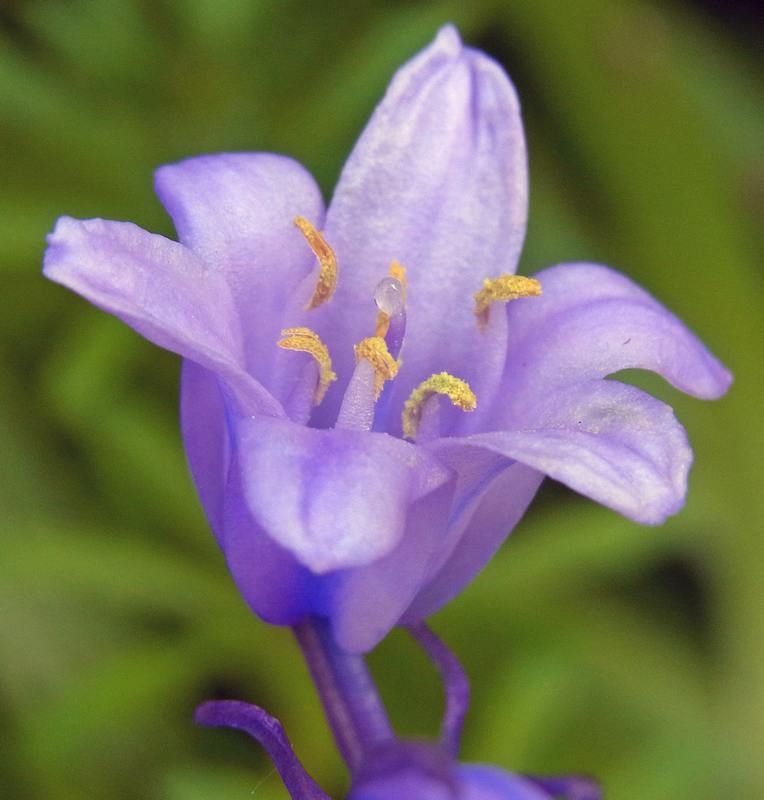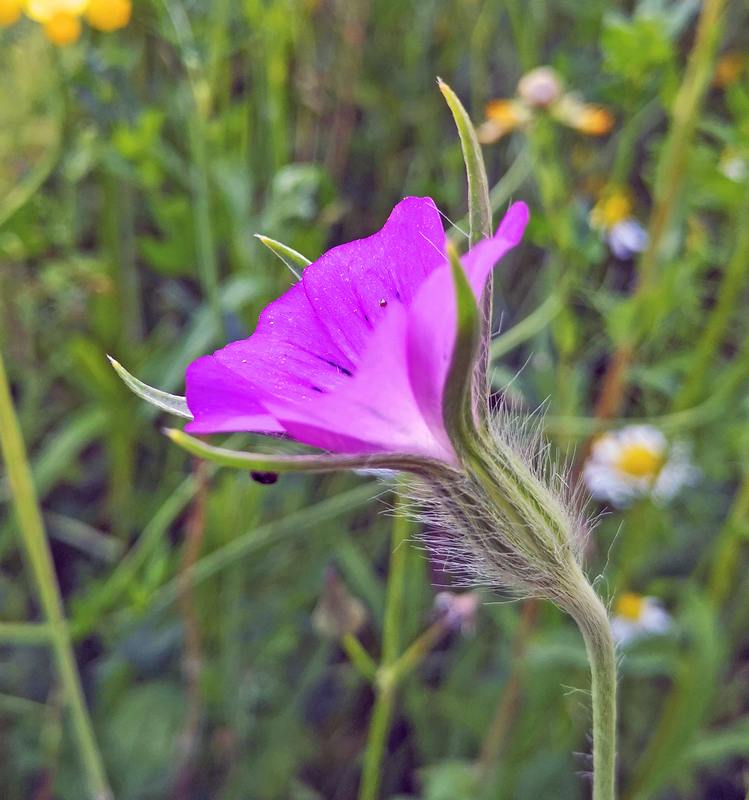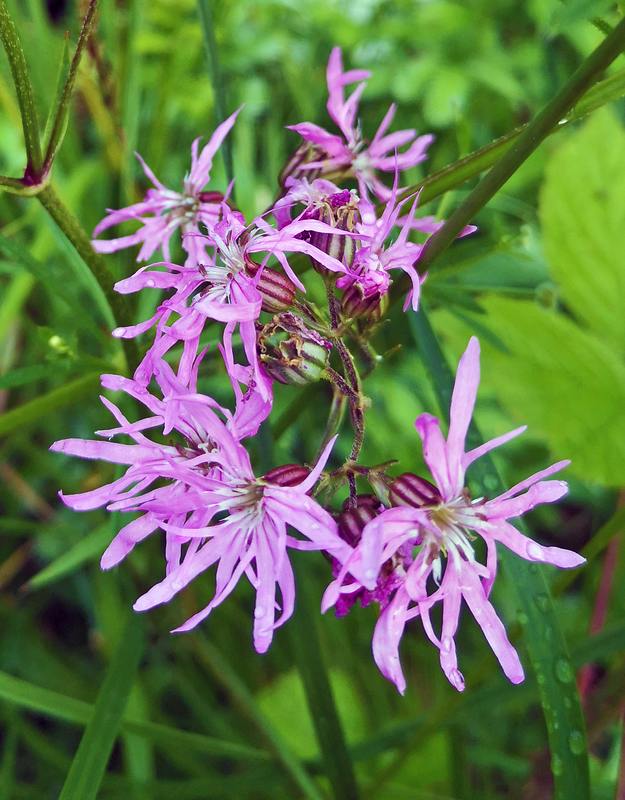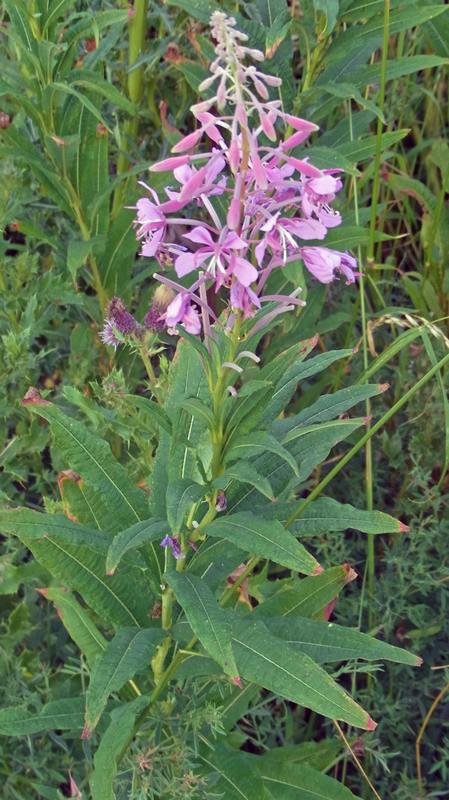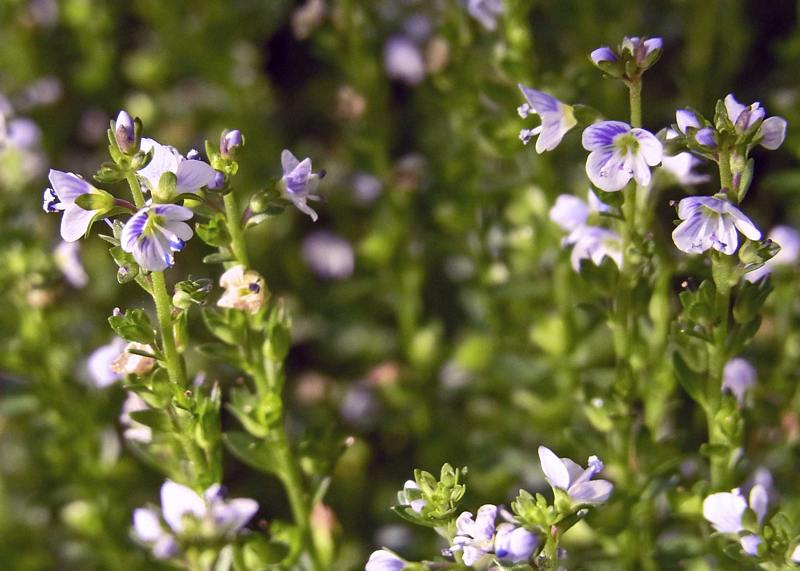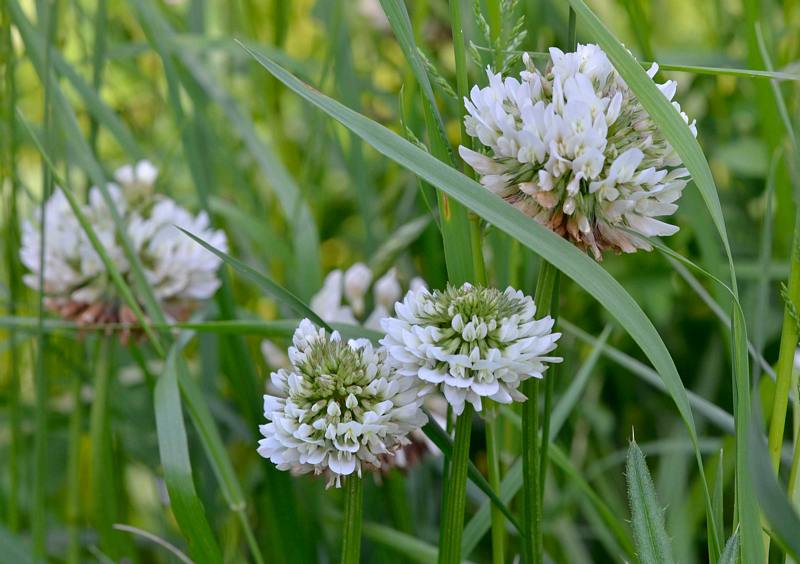Why should I create a wildflower garden?

In recent years there has been a lot of coverage in the media, by environmentalists about creating areas of wildflowers in gardens and meadows to support bees, insects and other forms of wildlife. Putting a small area of your garden aside for wildflowers, is the perfect solution for encouraging a diverse mixture of birds, bees, butterflies and other garden insects. They are the perfect solution for bringing new life and colour to a neglected area of your garden.
Growing wildflowers in your garden is a great way of maintaining its natural look, with added colour. They are relatively easy to maintain, cost effective and the final results can look stunning. Wildflower areas do not require regular mowing, they should only be cut 2/3 times a year at most.
They grow better on impoverished, infertile soils, therefore no feed is required, even during establishment. As they are very drought resistant once established, no irrigation is required, in fact, they will grow better during drier periods. The only time irrigation may be needed, is during the initial establishment of the seedlings.
With that said, many sources will have you believe that simply raking a wildflower seed mixture through an established piece of grass, is all that’s required to create a wildflower garden. The reality is very different, as it can take a lot of work, in correctly preparing the site prior to sowing, and eventually promoting the successful establishment of the area.

How do I choose a suitable area to grow wildflowers?
When choosing an area of the garden for wildflowers, there are a couple of things to consider:
- Low soil fertility – Ideally choose an area that is lacking in soil fertility. If the soil is fertile or high in nutrients then results may be poor, due to competition from coarse grasses, which favour fertile soils. Signs that a grassy area is fertile are strong, lush grass growth. If it is a waste area, then a presence of docks and nettles could indicate a fertile soil. Therefore, consider choosing another site, or alternatively you can remove the top soil to reduce the fertility. Another option to removing the top soil is to sow a cornfield annual mixture. These mixtures perform better than perennial wildflower where the soil is fertile. The only drawback is you have to sow them each year. Cornfield annuals include poppies, cornflowers, corn chamomile, corn marigold and corn-cockle.
- Avoid shaded areas – Although some species of wildflowers will grow in shade or partial shade, most require a certain amount of sunlight to grow successfully. However the area doesn’t need to be exposed to constant sunlight during the daylight hours, but they do require a fair amount of sun. If your site isn’t going to allow ample sunlight, then you may want to choose a mixture that is more suited for a shaded garden.
How do I prepare the soil for sowing wildflowers?

Once you have chosen the area e.g an area low in fertility and one that receives ample sunlight, you can go ahead with preparing the area for sowing the seed mixture.
The first step is to remove all traces of existing vegetation. This can be done in couple of ways, by hand or by chemical means. Hand digging and weeding can suffice for smaller areas, but can be quite laborious for larger areas. Once the area has been cleared of vegetation it need will cultivating / digging over, to a depth of 4 – 6 inches
It the area is quite large then you may want to use a total herbicide such as Round Up. Once again, after the vegetation has died the soil will need cultivating and the dead vegetation removing. Following this the soil can be firmed up by either treading or rolling, then give the surface a light raking.
Should the wildflower mixture included grasses?
When we grow a wildflower meadow from newly prepared bare ground, it is important to sow the correct mixture. As perennial wildflowers take time to establish, we have to include something in the mixture to prevent to invasion of coarse grasses and weeds. It also can’t be too aggressive, as to suppress the establishment of the wildflowers.
This is why non-competitive grasses are frequently included in seed mixtures. These mixtures are often referred to as a “nurse crop” as these grasses will help prevent any weed grasses invading and suffocating the wildflowers. As the wildflowers begin to establish, they should eventually replace the grasses.
If the area being sown is of a considerable size it is advisable to use a grass/wildflower mixture for the reasons given above. However, if you are only sowing a small area in a garden, then a 100% wildflower mixture would be the way to go, as weed control could easily be carried out manually, until the wildflowers establish.
How do I broadcast the seed mixture?
Once you are happy with the seedbed, you are now ready to broadcast the seed. To get a more even coverage it is advisable to broadcast the seed at two different 90 degree directions, each pass at half the application rate. The seed can be either applied by hand or by spreader. A spreader may be preferable for a larger area.
Because the application rates of wildflower seed is very low, the seed can be bulked up with sand to make the application process easier. Ensure that the seed is mixed thoroughly with the sand to get an even application. Once the seed has been applied, it is advisable to give the area a light rolling to encourage the seed to come into contact with the soil. If you don’t have a roller walking over the entire area will suffice, If the soil is dry, irrigate it thoroughly, but avoid saturating it.
The video below has some excellent tips on starting a wildflower garden
When should the seed be sown?
There are a couple of preferred times in the year for sowing wildflower seed, these are during the autumn (September/ October) or spring (March or April). However, is your soil is heavy (clay) and prone to prolonged periods of wetness and water logging, it would be better to wait until spring before sowing the seed.
Alternatives to seeding

Creating a wildflower meadow using a seed mixture isn’t the only option on the table. There are a couple of other methods, namely the use of wildflower plugs and special pre-grown turf. Both are more expensive than seeding, however the chances of success is vastly improved. We’ll take a look at each method in turn.
Wildflower plugs
As we have already touched upon, wildflowers grow better on nutrient deficient soils. If you are planting into bare soil it should be free of any vegetation, use the same method for clearing the site, that we used for seeding.
If planting on grassland it should be free of any tough, aggressive grasses such as rye grass, as these grasses will out compete the wildflower plugs. If possible try and thin the grass sward out prior to planting, i.e. mow it quite short and vigorously scarify it (remove all clippings and debris).
The ideal time for planting plugs is during the late summer – early autumn, while there is till plenty of warmth left in the ground. This will help with establishment of the new plugs. If the soil is dry, water it prior to planting, the plugs should also be watered prior to planting.
When planting, aim to plant about 5 plugs per square metre, grouping 3 or 4 of the same species together. If planting in grassland, remove the vegetation to a diameter of 20 cm around the plug to reduce competition from the grasses, firm them in well and water them again.
If conditions turn dry, keep them well watered, but not saturated. The biggest cause of plant death after planting is due to the lack of water, so ensure the ground is kept moist.
Pre-grown wildflower turf
The final option is to use pre-grown turf. Once again it is important to lay the turf on nutrient deficient soil, if you’re not sure how many nutrients are in the soil, you can have it tested. At no point add any feed or compost to the soil. The initial step is to clear all vegetation from the site.
It should then be cultivated to a depth of 15 cm. Firm it up, by treading in down, then loosen the top with a rake, producing a fine tilth to encourage good turf and soil contact.
You are now ready to go ahead and lay the wildflower turf. It is laid in exactly the same way as normal turf. Avoid walking on the turf once it is down, by using boards. Walking on the boards will also firm the surface and help the turf come into contact with the soil.
As soon as it is laid, water it thoroughly, ensuring the water has penetrated through the turf and into the soil. Over the next few days keep watering if required, however, avoid keeping it saturated. The ideal times for watering turf are early morning or late evening. After a couple of weeks, check to see if the turf has taken root, if it has you can reduce the watering frequency until the turf has established.
Cornfield annual wildflowers
If your site is quite fertile, then chances are a perennial mixture will not perform well, then the sowing of cornfield annuals may be the answer. They grow well on all types of soil and look spectacular. They can be sown on there own or with a perennial seed mixture. The ideal times to sow then is from autumn or early spring, they should flower as soon as May reaching a peak in June. The only drawback is the ground has to prepared each year prior to sowing them.
Yellow Rattle

Yellow rattle is an annual wildflower that is semi parasitic, in that it attaches itself to the roots of coarse grasses, robbing them of vital nutrients and water. This weakens and suppresses grass growth and allows other wildflowers to thrive when they previously would be choked out by the vigorous grasses.
Yellow rattle has to be sown during the autumn (it can be mixed with other wildflower seeds) as it requires the cold winter months to bring it out of dormancy and kick start germination. It prefers low and moderately fertile soils but results will most likely be poor on very fertile sites. More information on yellow rattle.
Aftercare of wildflowers
Perennial Wild Flower Mixes
Autumn Sown Mixture
Initial year of sowing
- March If there is sufficient growth, cut at 5 cm high, removing the clippings.
- May Cut at 5 cm, again remove the clippings.
- September / October Cut at 5 cm, leave for a few days to allow any seed to return to the soil, then remove the clippings.
Subsequent years
- March / April If there is sufficient growth, cut at 5 cm, removing the clippings.
- October Cut at 5 cm, leave for a few days to allow any seed to return to the soil, then remove the clippings.
Spring Sown Mixture
- 4 – 6 weeks after sowing It there is sufficient growth, cut at 5 cm, removing the clippings.
- May Cut at 5cm, again remove the clippings.
- October Cut at 5 cm, leave for a few days to allow any seed to return to the soil, then remove the clippings.
Subsequent years
- March / April It there is sufficient growth, cut at 5 cm, removing the clippings.
- October Cut at 5 cm, leave for a few days to allow any seed to return to the soil, then remove
the clippings.
Annual & Perennial Wild Flowers Mixture
Autumn Sown mixtures
- March / April It there is sufficient growth, cut at 5 cm, removing the clippings.
- October Cut at 5 cm, leave for a few days to allow any seed to return to the soil, then remove the clippings.
Subsequent years
- March / April It there is sufficient growth, cut at 5 cm, removing the clippings.
- October Cut at 5 cm, leave for a few days to allow any seed to return to the soil, then remove the clippings
Spring Sown Mixture
- August to October Cut at 50 cm following flowering, leave a few days to allow any seed to return to the soil, then remove the clippings (spring sown mixes often flower later in the year than autumn sown mixes).
Subsequent years
- March / April If there is sufficient growth, cut at 5 cm, removing the clippings.
- October Cut at 5 cm, leave for a few days to allow any seed to return to the soil, then remove the clippings.
NB. A 100% cornfield annual mixture will initially, not flower for more than a year. Reseeding is required year after year to produce annual flowering. However, after a number years a seed bank of cornfield annuals will build up, allowing the wildflowers to regenerate in subsequent years. All it requires is some soil disturbance during the spring, to help the seeds germinate.
Wildflower mixtures for different soil types
Clay soil mixture
Autumn Hawkbit Leontodon autmnalis
Betony Betonica officinalis
Birdsfoot Trefoil Lotus corniculatus
Common Knapweed Centaurea nigra
Dandelion Taraxacum officinale
Common Poppy Papaver rhoeas
Cowslip Primula veris
French Lilac Galega officinalis
Lady’s Bedstraw Galium verum
Meadow Buttercup Ranunculus acris
Meadow Vetchling Lathyrus pratensis
Meadowsweet Filipendula ulmaria
Musk Mallow Malva moschata
Oxeye Daisy Leucanthemum vulgare
Pepper Saxifrage Silaum silaus
Ragged Robin Silene flos-cuculi
Red Clover Trifolium pratense
Ribwort Plantain Plantago lanceolata
Rough Hawkbit Leontodon hispidus
Selfheal Prunella vulgaris
Yarrow Achillea millefolium
Yellow Rattle Rhinanthus minor
Sandy soil mixture
Autumn Hawkbit Leontodon autumnalis
Birdsfoot Trefoil Lotus corniculatus
Black Medic Medicago lupulina
Bladder Campion Silene vulgaris
Bulbous Buttercup Ranunculus bulbosus
Common Knapweed Centaurea nigra
Common Sorrel Rumex acetosa
Common Toadflax Linaria vulgaris
Cowslip Primula veris
Hoary Plantain Plantago media
Kidney vetch Anthyllis vulneraria
Lady’s Bedstraw Galium verum
Oxeye Daisy Leucanthemum vulgare
Meadow Buttercup Ranunculus acris
Musk Mallow Malva moschata
Red Clover Trifolium pratense
Selfheal Prunella vulgaris
Sheep’s Sorrel Rumex acetosella
Viper’s Bugloss Echium vulgare
Wild Carrot Daucus carota
Yarrow Achillea millefolium
Yellow rattle Rhinanthus minor
Chalky soil mixture (high pH)
Common Poppy Papaver rhoeas
Birdsfoot Trefoil Lotus corniculatus
Bulbous Buttercup Ranunculus bulbosus
Common Knapweed Centaurea nigra
Common Poppy Papaver rhoeas
Cowslip Primula veris
Dropwort Filipendula vulgaris
Field Scabious Knautia arvensis
Greater Knapweed Centaurea scabiosa
Hoary Plantain Plantago media
Kidney Vetch Anthyllis vulneraria
Lady’s Bedstraw Galium verum
Meadow Buttercup Ranunculus acris
Meadow Cranesbill Geranium pratense
Oxeye Daisy Leucanthemum vulgare
Rough Hawkbit Leontodon hispidus
Sainfoin Onobrychis viciifolia
Salad Burnet Poterium sanguisorba
Selfheal Prunella vulgaris
Small Scabious Scabiosa columbaria
Wild Basil Clinopodium vulgare
Wild Carrot Daucus carota
Wild Marjoram Origanum vulgare
Yarrow Achillea millefolium
Acid soil mixture (low pH)
Autumn Hawkbit Leontodon autumnalis
Betony Betonica officinalis
Bird’s Foot Trefoil Lotus corniculatus
Common Knapweed Centaurea nigra
Common Sorrel Rumex acetosa
Common Poppy Papaver rhoeas
Cowslip Primula veris
French Lilac Galega officinalis
Lady’s Bedstraw Galium verum
Meadow Buttercup Ranunculus acris
Meadow Vetchling Lathyrus pratensis
Musk Mallow Malva moschata
Oxeye Daisy Leucanthemum vulgare
Ragged Robin Silene flos-cuculi
Ribwort Plantain Plantago lanceolata
Selfheal Prunella vulgaris
White Campion Silene latifolia
General purpose mixture
Autumn Hawkbit Leontodon autumnalis
Betony Betonica officinalis
Bird’s Foot Trefoil Lotus corniculatus
Common Knapweed Centaurea nigra
Common Poppy Papaver rhoeas
Cowslip Primula veris
Field Scabious Knautia arvensis
Lady’s Bedstraw Galium verum
Meadow ButtercupRanunculus acris
Musk Mallow Malva moschata
Oxeye Daisy Leucanthemum vulgare
Ragged Robin Silene flos-cuculi
Ribwort Plantain Plantago lanceolata
Rough Hawkbit Leontodon hispidus
Selfheal Prunella vulgaris
White campion Silene latifolia
Yarrow Achillea millefolium
Yellow Rattle Rhinanthus minor
Cornfield annuals mixture
Common Poppy Papaver rhoeas
Corncockle Agrostemma githago
Cornflower Centaurea cyanus
Corn Chamomile Anthemis austriaca
Corn Marigold Glebionis segetum
The gallery below has various images of some common wildflowers (click to enlarge image)


